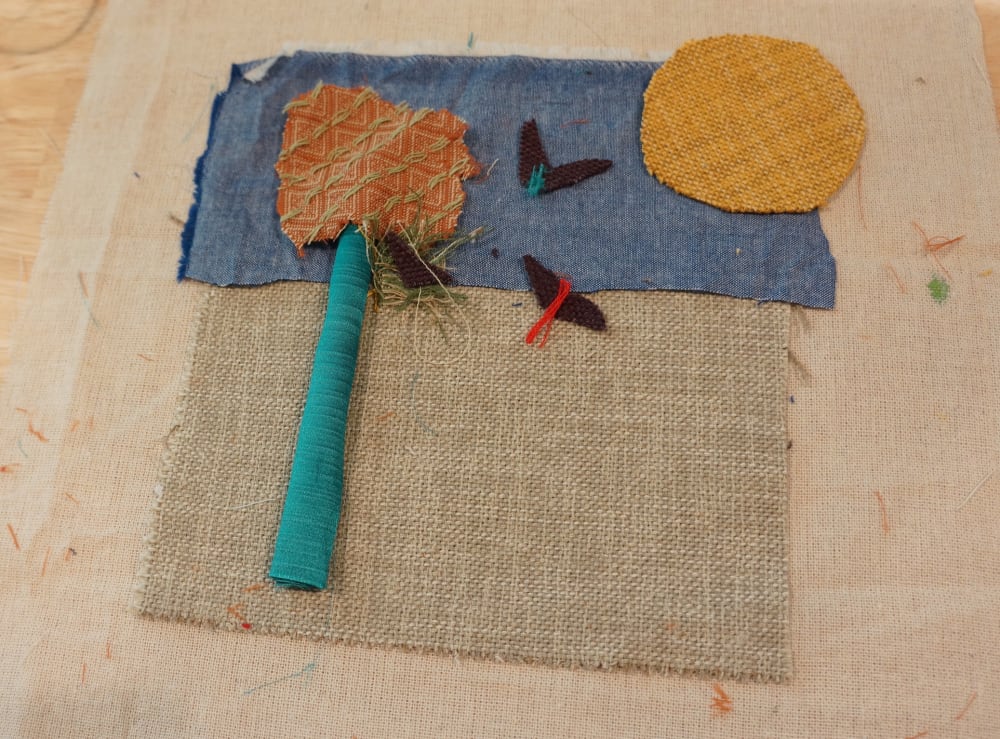
SURGE II: art X Assisted Reproduction Technologies (ART)

- Written byIris Tsang
- Published date 27 October 2022

UAL’s Post-Grad Community, in collaboration with Wellcome / EPSRC Centre for Interventional and Surgical Sciences (WEISS), have launched SURGE II: a project bringing together scientists, artists, and the public to explore the complexities and application of technology in surgery.
Iris Tsang, MA Fashion Cultures and Histories alumni (London College of Fashion), updates us on her SURGE II project with UCL researcher and PhD candidate Chloe He.
Iris Tsang partnered with researcher and UCL PhD candidate Chloe He in examining the meaning of family, family-building in the context of fertility care with a group of 6 participants with diverse sexual orientation.
Chloe researches 3D scans on monitoring early stage embryo development, in order to identify stronger cell bond patterns that indicate higher successful pregnancy rate. Inspired by Chloe’s research, Iris focuses on the early memories and moments that motivate or impact the participants' views on family building.
Background
Infertility affects millions of individuals, families and communities worldwide, impacting the human right of individuals and couples to make family plans, such as the number, timing and spacing of their children. Infertility also brings significant negative psycho-social impacts on the lives of couples and individuals and is often associated with social stigma, emotional stress, depression and low self-esteem.
Assisted reproduction technologies (ART) have been available for over three decades and are a rapidly developing research field. Notwithstanding, while scientists and healthcare systems strive to combat infertility issues there are still debates surrounding the use of ART.
One in five heterosexual couple experience infertility (Centers for Disease Control and Prevention, 2022). The ratio is much higher in the LGBTQ+ population. Studies have noted that LGBTQ+ individuals are among the fastest growing users of fertility care, including vitro fertilization, intrauterine semination, gamete donation, and surrogacy planning. However, there are significantly less studies in ART focusing on the LGBTQ+ population. Therefore, the systemic inequities faced by sexual and gender minority groups are often unaware by fertility care providers and research.
The art x ART project aims to explore journeys of family planning of six diverse individuals through the collection and narration of oral histories and lived experiences, in order to unveil personal and collective barriers related to infertility, as well as de-mythicise and de-stigmatise some aspects of ART.

Textile art creative workshop
The original two textile art-making focus groups were conducted with interviews on the meaning of family and family building. All participants were invited to share and reflect on different stages of their path to family building and parenthood while creating a textile art piece.
‘I didn’t know I could create artworks like this.’ (Participant, 2022)
‘I did not know family means so much to me, talking through the session helps me to articulate that. It feels very therapeutic.’ (Participant, 2022)

‘What does family or family building mean to you?’
The original research question was set on a more optimistic tone: ‘if you know medical researchers and care workers are devoted to monitor and nurture your future children from the beginning stage of embryo development, what would that make you feel?’ However, the research question evolved to be more objective and general, aiming to address a more diverse participant group. The participants shared their ideal family experience and unveil concerns and challenges related to family building and fertility care. The barriers start way before their possible fertility treatments or even an embryo development stage. One participant shared that the lack of discourse or framework of a queer or gay family when he grew up in an orthodox community resulted in a limited imagination of what a family could look like to him, which he needed to take time to figure out a blueprint while his heterosexual peers have already built a nuclear family at this life stage.
One participant shared that the terminology used in fertility care is often heteronormative that excludes the experiences of queer and homosexual people. Fertility frameworks and facilities that are exclusively or binarily gendered could be traumatizing and triggering for LGBTQ+ people. Furthermore, the heteronormativity infrastructure in fertility care causes service gaps and grey areas. For example, a semen sample cannot be attributed to a female profile in the record-keeping software, this rejects and denies a person in transition in the existing system.
The study also discussed classism and systematic exclusion of LGBTQ+ people in fertility care, such as systematic inequality of economical, legal and geo-political access and limited research specific to LGBTQ+ populations.

Related links
- Read more about Iris' SURGE II project (14mb)
- Find out more about SURGE II
- Wellcome / EPSRC Centre for Interventional and Surgical Sciences (WEISS)
- Follow Iris on Instagram
- View Iris' website
- UAL Post-Grad Community
- SURGE I exhibition walkthrough
UAL Post-Grad Community
Established in 2013, Post-Grad Community is an inclusive platform for all UAL postgraduate students to share work, find opportunities and connect with other creatives within the UAL and beyond. Find out more